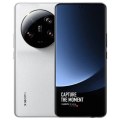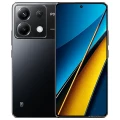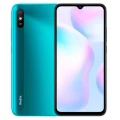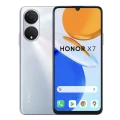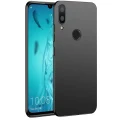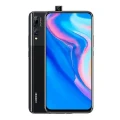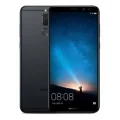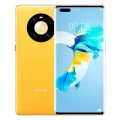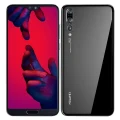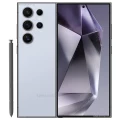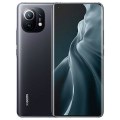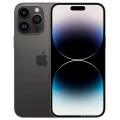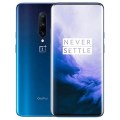- Awesome page
- Latest Mobile
- Smartphones
- Xiaomi Redmi 10
Xiaomi Redmi 10
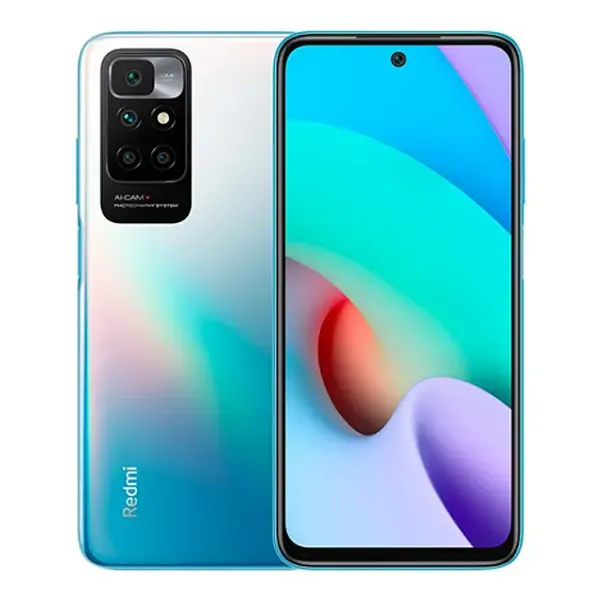


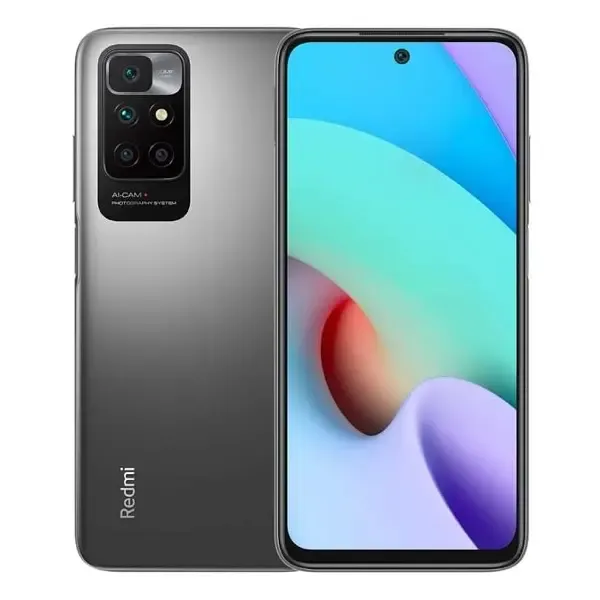
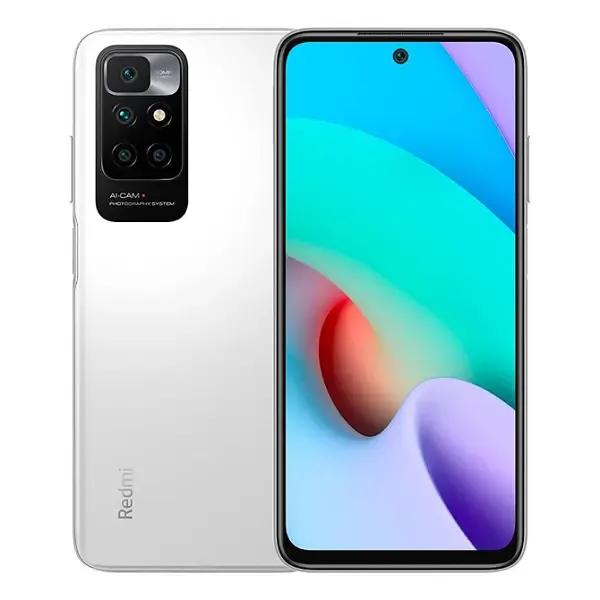
Xiaomi Redmi 10 Price in Bangladesh
The Xiaomi Redmi 10 is available in two variants: 64GB/4GB RAM and 128GB/6GB RAM. It is powered by the MediaTek Helio G88 (12nm) chipset and runs on Android 11, offering a balanced performance for everyday use.
The device features a 5000mAh battery with 18W fast charging, ensuring long usage with quick recharge capability.
Price in Bangladesh
The Xiaomi Redmi 10 is priced at BDT 18,999.
Specifications
General
| Model | Xiaomi Redmi 10 |
| Announced | 18-08-2021 |
| Released | 20-08-2021 |
| Status | Available |
| Official price | 4GB 64GB ৳18,999 / 4GB 128GB ৳19,999 / 6GB 128GB 20,999 |
| Unofficial price | 4GB 64GB ৳14,000 / 6GB 128GB 16,500 |
Design
| Dimensions | 161.9 x 75.5 x 8.9 mm (6.37 x 2.97 x 0.35 in) |
| Weight | 181 g (6.38 oz) |
| Colors |
Carbon Gray, Pebble White, Sea Blue |
Network
| Technology | GSM / HSPA / LTE |
| 2G Network |
GSM 850 / 900 / 1800 / 1900 - SIM 1 & SIM 2 |
| 3G Network |
HSDPA 850 / 900 / 1700(AWS) / 1900 / 2100 |
| 4G Network | LTE |
| GPRS <strong>GPRS</strong> (General Packet Radio Service) is a packet oriented mobile data service on the 2G and 3G cellular communication system's global system for mobile communications (GSM), Generally, GPRS is used for the purpose of wireless data transfer, such as sharing pictures and videos or browsing the Internet via a mobile phone connection. | |
| EDGE <strong>EDGE</strong> (Enhanced Data GSM Environment) is a wireless network technology generally considered the next step in the 2G network offers data transfer rates up to four times faster than ordinary GSM networks, Generally, EDGE is used for the purpose of wireless data transfer, such as sharing pictures and videos or browsing the Internet via a mobile phone connection. | |
| Speed | HSPA 42.2/5.76 Mbps, LTE-A (CA) |
Display
| Display Type <strong>Display Technology => </strong> A number of display technologies and types used in mobile phones => TFT (Thin Film Transistor), IPS (In-Place Switching), OLED (Organic Light Emitting Diode), AMOLED (Active-Matrix Organic Light-Emitting Diode), Super AMOLED (an even advanced version of AMOLED), Resistive Touchscreen (Resistive touchscreens contain two layer of conductive material with a very small gap between them which acts as a resistance), Capacitive Touchsceen (Capacitive touchscreen technology consists of a layer of glass coated with a transparent conductor) | IPS LCD capacitive touchscreen, 16M colors |
| Size | 6.5 inches, 102.0 cm2 (~83.5% screen-to-body ratio) |
| Resolution | 1080 x 2400 pixels, 20:9 ratio (~405 ppi density) |
| Features |
90Hz |
Camera
Main camera
| Camera Setup | Quad |
| Primary <strong>Camera</strong> is able to capture photographs and usually videos, The most important characteristics of a camera are the resolution (measured in megapixels), lens focus type (fixed or automatic), higher megapixel cameras are known to capture higher quality photos, but not always a good measurement of the photos quality. |
50 MP, f/1.8, (wide), PDAF 8 MP (ultrawide) 2 MP (macro) 2 MP (depth) |
| Features |
LED flash, HDR, panorama |
| Video | 1080p@30fps |
Selfie camera
| Camera Setup | Single |
| Primary <strong>Camera</strong> is able to capture photographs and usually videos, The most important characteristics of a camera are the resolution (measured in megapixels), lens focus type (fixed or automatic), higher megapixel cameras are known to capture higher quality photos, but not always a good measurement of the photos quality. |
8 MP, f/2.0, (wide) |
Hardware
| Chipset <strong>Chipset</strong> is a group of integrated circuits designed to perform one or a more dedicated functions, often with real time computing constraints, Popular smartphones are equipped with more advanced embedded chipsets that can do many different tasks depending on their programming. | MediaTek Helio G88 (12nm) |
| CPU <strong>CPU</strong> (Central Processing Unit) mostly known as processors, CPU processes instructions in order to carry out certain functions that make your device operate properly. Processors are often described as the brain of computers, smartphones and tablets, Smartphones and tablets rely on processors to carry out their every task, Processors are an incredibly important factor in selecting any type of computing device, including your smartphone. | Octa-core (2x2.0 GHz Cortex-A75 & 6x1.8 GHz Cortex-A55) |
| GPU <strong>GPU</strong> (Graphics Processing Unit) is a single-chip processor designed to rapidly manipulate and alter memory to accelerate the creation of images in a frame buffer intended for output to a display, This includes things such as lighting effects, object transformations, and 3D motion. | Mali-G52 MC2 |
| RAM (Memory) <strong>RAM</strong> (Random Access Memory) is a type of computer memory that can be accessed randomly, any byte of memory can be accessed without touching the preceding bytes that allows information to be stored and accessed quickly from random locations. RAM is the most common type of memory found in computer systems, smartphones, tablets and other electronic devices. | 4/6 GB |
| Internal Storage <strong>Internal Storage</strong> is a data storage space (flash memory) mostly used in smartphones, tablets and other electronic devices where operating system, apps, music, photos, videos, files and other user data Is stored. | 64/128 GB eMMC |
| Sensors <strong>Sensors</strong> are electronic components that detects and responds to some type of input from the physical environment. The specific input could be light, heat, motion, moisture, pressure and location, The output is generally a signal that is converted to use in computing systems, a location sensor, such as a GPS receiver is able to detect current location of your electronic device. |
Fingerprint (side-mounted), accelerometer, gyro, proximity, compass |
Connectivity
| Bluetooth <strong>Bluetooth</strong> is a wireless communications technology for exchanging data between mobile phones, headsets, computers and other network devices over short distances without wires, Bluetooth technology was primarily designed to support simple wireless networking of personal consumer devices. | 4.2, A2DP |
| Infrared <strong>Infrared</strong> connectivity is an old wireless technology used to connect two electronic devices. It uses a beam of infrared light to transmit information and so requires direct line of sight and operates only at close range. | |
| USB | USB Type-C |
| GPS <strong>GPS</strong> The Global Positioning System is a satellite-based radio navigation system, GPS permits users to determine their position, velocity and the time 24 hours a day, in all weather, anywhere in the world, In order to locate your position, your device or GPS receiver must have a clear view of the sky. | Yes, with A-GPS, GLONASS, GALILEO, BDS |
| NFC <strong>NFC</strong> (Near field communication) is a set of standards for smartphones and similar devices to establish peer-to-peer radio communications with each other by touching them together or bringing them into proximity, usually no more than a few inches. |
Battery
| Battery Type <strong>Battery Type => </strong> Cell phones run on various kinds of batteries depending on the manufacturer, phone size or shape and features. There are basically four types of cell phone batteries => Lithium Polymer, Lithium Ion, Nickel Metal Hydride and Nickel Cadmium. | Non-Removable Li-Po |
| Capacity <strong>Battery Capacity</strong> is a measure (typically in Amp-hr) of the charge stored by the battery, and is determined by the mass of active material contained in the battery. The battery capacity represents the maximum amount of energy that can be extracted from the battery under certain conditions. | 5000 mAh |
| Charging Charging | Fast charging 18W 9W reverse charging |
Xiaomi Redmi 10 Review: The Budget Smartphone Redefined
With the budget smartphone market more competitive than ever, the Xiaomi Redmi 10 stakes its claim as a standout contender. Targeting tech enthusiasts, budget-conscious buyers, and Xiaomi loyalists, this device promises a robust set of features without stretching your wallet. But does it really deliver? We put the Xiaomi Redmi 10 under the microscope to find out if it’s worth your hard-earned cash.
Design and Build Quality
From the moment you pick up the Xiaomi Redmi 10, it’s evident that it punches above its weight in terms of design. The phone sports a modern and sleek look, wrapping its internals in a polycarbonate frame that feels surprisingly premium for a device in this price range. The textured finish on the back not only enhances grip but also minimizes fingerprints—something you’ll appreciate if you hate smudged surfaces.
The rear features Xiaomi’s signature camera module—a rectangular bump that houses its quad-camera setup. Despite the noticeable bump, the device manages to feel well-balanced in hand. Coming in three color options—including Carbon Gray, Pebble White, and Sea Blue—the Redmi 10 embraces a design ethos that appeals to both minimalists and those who prefer a pop of color.
While the materials used are on par for its price range, the build quality doesn’t feel compromised. The device feels sturdy without sacrificing aesthetics. And at just 181g with a thickness of 8.9mm, it strikes a nice balance between heft and portability.
Display and Visual Experience
The Xiaomi Redmi 10 shines (literally) with its 6.5-inch FHD+ DotDisplay. Featuring a resolution of 2400×1080 pixels and a 90Hz adaptive refresh rate, the screen offers a smooth scrolling experience perfect for gaming and browsing alike.
Colors are vibrant, viewing angles are solid, and text looks crisp—making it enjoyable for reading, streaming, and casual social media use. Its adaptive refresh rate adjusts intelligently based on your on-screen activity to optimize battery life, a feature that’s rarely seen in this price category.
The panel’s 405ppi density ensures sharp visuals, and outdoor performance under direct sunlight is commendable. However, brightness can feel slightly inadequate in extremely sunny conditions, leaving you squinting at times. Still, for budget-conscious users, the Redmi 10’s display ticks most of the boxes, offering an upgrade over older models.
Performance and Battery Life
Powering the Xiaomi Redmi 10 is the MediaTek Helio G88 chipset, a 12nm processor that’s purpose-built for mid-range devices. Pair that with up to 6GB of RAM, and you’ve got a phone capable of managing day-to-day tasks like browsing, multitasking, and even light gaming with ease.
For casual gamers, the Redmi 10 handles titles like Call of Duty Mobile and PUBG Lite at low to medium settings without noticeable lag. It’s not a powerhouse for graphics-intensive games, but it performs admirably for its price.
Battery life is another major highlight. The 5000mAh cell ensures you can go a full day of heavy usage without worrying about reaching for the charger. When you do need to top up, the 18W fast charging support gets the job done efficiently, though it’s worth noting that other competitors might push the boundaries with faster charging speeds.
Camera Features and Performance
The Redmi 10 boasts a quad-camera setup, headlined by a 50MP primary sensor that delivers detailed and sharp photographs, especially in well-lit environments. Supporting the main shooter are an 8MP ultra-wide lens, a 2MP macro sensor, and a 2MP depth sensor.
Daytime photography is where the Redmi 10 excels—colors are vibrant, and images exhibit a surprising amount of detail for this price range. Portrait shots benefit from natural-looking background blurs, while the ultra-wide lens captures broader frames with decent distortion control. Macro shots, however, aren’t as impressive, with limited clarity and usability.
Night photography is serviceable but not groundbreaking. Using the Night Mode feature helps boost low-light shots, though the resulting images sometimes suffer from noise and lack of sharpness. For video, the Redmi 10 supports 1080p recording at 30fps, delivering consistent results suited for casual social media sharing.
User Interface and Software
Xiaomi’s MIUI 12.5, built on Android 11, powers the Redmi 10 experience. If you’ve used Xiaomi devices before, you’ll find the interface familiar. It’s feature-packed, allowing for extensive customization, including themes, gestures, and app cloning.
However, the MIUI experience isn’t perfect. The software comes with pre-installed apps, some of which you might never use—but the good news is, many can be uninstalled to save storage space. Xiaomi has also worked on improving system performance and minimizing bloat, making the updated MIUI feel smoother than before.
Frequent software updates and access to Google apps put this device in a competitive position, but for users new to MIUI, the slightly steeper learning curve could take some getting used to.
Value for Money
When comparing the Redmi 10 to its competitors in the same price range, like the Realme Narzo 50A and Samsung Galaxy M12, it stands out in several areas. Whether it’s the 50MP camera, the impressive 90Hz display, or the large 5000mAh battery, Xiaomi has managed to pack premium features into this budget-friendly device.
That said, no smartphone is perfect, and the Redmi 10 is not without minor drawbacks, particularly its slightly dim display brightness in outdoor conditions and underwhelming macro performance. Still, these are small trade-offs considering its overall performance and the value it provides to budget shoppers.
Is the Xiaomi Redmi 10 Worth It?
If you’re looking for a budget phone that doesn’t compromise on features, the Xiaomi Redmi 10 is an excellent choice. Its sleek design, strong performance, and versatile camera setup make it a standout in the under-$200 price category.
Whether you’re a tech enthusiast looking for a secondary device, a budget shopper who wants the biggest bang for your buck, or a Xiaomi fan eager to explore their latest offering, the Redmi 10 delivers.
